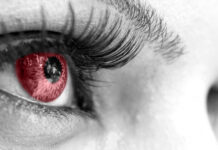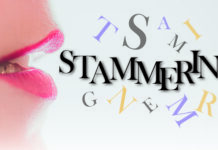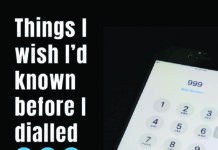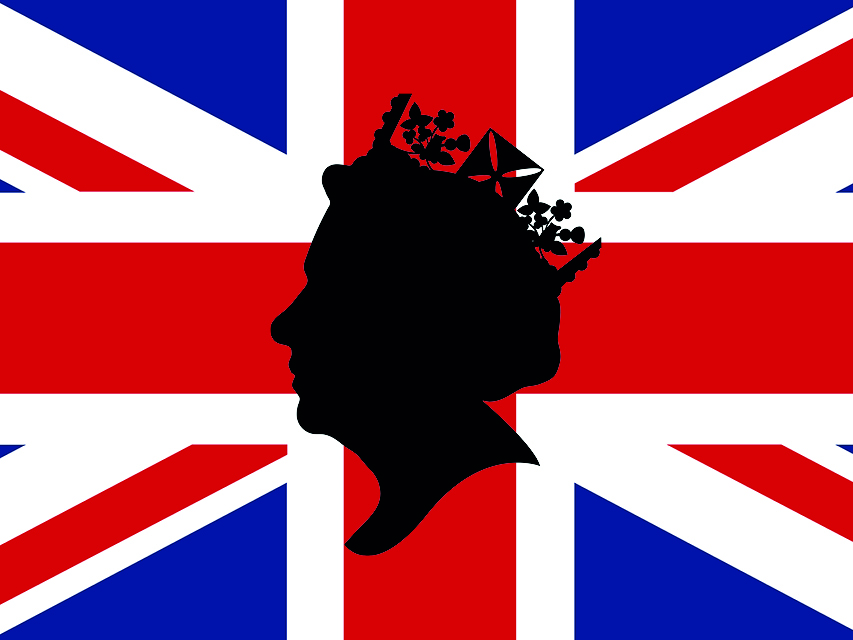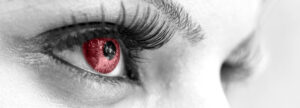A Platinum Journey Through Time
Our Elizabethan Age
By John Harper
WHAT extraordinary memories must have passed through the mind of our 95-year-old monarch as she sat alone amid the medieval splendour of Windsor Castle, silently bidding farewell to her prince.
The date was Saturday 17 April 2021, and Queen Elizabeth II – separated from her family due to Covid restrictions – looked on from a solitary pew in St George’s Chapel as her steadfast rock and constant companion for over 73 years was laid to rest.
With choral music breaking through the funereal gloom, did the Queen’s thoughts slip back to her wedding day of November 20, 1947, when she and Prince Philip pledged their love and lives to each other in front of the sacred altar of Westminster Abbey.
Or perhaps memories were rewound of February 6, 1952, a day when, whilst on an official tour in Kenya, Prince Philip had the heart-wrenching task of breaking the news to his young wife that King George VI, her beloved father, had died.
Upon their arrival back at London Airport, the 25-year-old new monarch was met by sombre faced dignitaries including Prime Minister Winston Churchill.
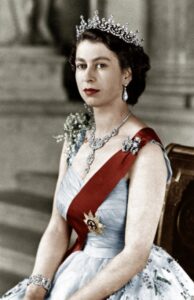 So began a second Elizabethan age, an era in which the very shape and structure of British society would be fundamentally transformed. Subsequent decades would witness amazing advances in science, medicine, technology and the arts. Social attitudes would change out of all recognition. Mankind would also see dreadful human savagery and have to face an emerging threat of a global climate catastrophe.
So began a second Elizabethan age, an era in which the very shape and structure of British society would be fundamentally transformed. Subsequent decades would witness amazing advances in science, medicine, technology and the arts. Social attitudes would change out of all recognition. Mankind would also see dreadful human savagery and have to face an emerging threat of a global climate catastrophe.
At the very start of the Queen’s reign Harry S. Truman was the 33rd President of the United States, Joseph Stalin ruled Russia, and Europe was in the grip of the Cold War.
In December the city of London was cloaked beneath a thick pall of ‘smog’, a deadly combination of household chimney smoke combined with car exhaust fumes and sulphur dioxide emitted from hundreds of factory chimneys. In just four days an estimated 4,000 to 12,000 people died from respiratory infections.
But 1952 was also the year in which the world’s first jet airliner passenger service, the Comet, was inaugurated by BOAC, opening up an exciting new era of cheap foreign travel and package holidays.
The following year the Queen returned to Westminster Abbey for an occasion which, for many people, signalled the beginning of our modern age.
Broadcast live on 2 June 1953 the Coronation made television a mainstream medium with more than 20 million people watching the service on TV, outnumbering the radio audience for the first time.
That same week saw Edmund Hillary and Tenzing Norgay climb Mount Everest, the first human beings to stand on ‘the roof of the world’. Less newsworthy but far more ground-breaking was Francis Crick and James Watson’s success in unravelling the mystery of the twisted-ladder structure of deoxyribonucleic acid (DNA), a milestone in science that gave rise to modern molecular biology.
In 1955 Britain’s ageing Prime Minister Sir Winston Churchill resigned and was succeeded by his former foreign secretary Anthony Eden. The introduction of smokeless zones would end London’s deadly ‘pea-souper’ fogs.
But in October 1956 the world looked on with trepidation as an ill-fated Anglo-French invasion of Egypt turned into an unmitigated disaster. The operation – prompted by the nationalisation of the Suez Canal by President Gamal Abdel Nasser – caused Eden to resign. He was replaced as Prime Minister by the avuncular statesman Harold Macmillan, often caricatured as ‘Supermac’.
Oil was discovered in the North Sea In 1959, and the following year saw Mr Macmillan deliver his historic ‘winds of change’ speech which signalled the British government’s acceptance that the days of Britain’s Empire were over.
1961 witnessed South Africa withdraw from the Commonwealth and Jamaica gain independence.
In 1963 the assassination of American President John F Kennedy sent shockwaves around the world. The appalling events in Dallas were played out against a backdrop of a new music phenomenon labelled by the press as ‘Beatlemania’. The pop charts were dominated by British artists such as The Beatles, whose music would become the soundtrack of the ‘Swinging Sixties’.
In 1964 Tokyo hosted the 18th Summer Olympics; the ‘fab four’ Beatles took America by storm, race riots gripped many U.S. cities, and Harold Wilson’s Labour Party won the General Election, heralding a new era of socialism.
After witnessing the thrilling 1966 World Cup Final from Wembley Stadium’s royal box, Her Majesty beamed with pride as she handed the gleaming Jules Rimet Trophy to England’s charismatic captain Bobby Moore following his team’s 4-2 defeat of West Germany.
The Road Safety Act of 1967 introduced the first drink driving alcohol limit in the UK. The year also saw Capital punishment abolished for murder and the United Kingdom’s Sandie Shaw win the Eurovision Song Contest singing ‘Puppet On A String’.
On 20 July 1969 the Queen was one of 650 million television viewers worldwide who watched grainy black and white images of astronauts Neil Armstrong and Buzz Aldrin become the first humans to walk on the moon.
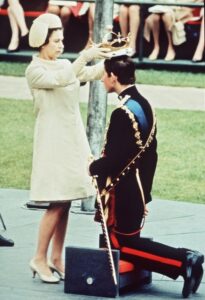 The year also saw the Queen invest her eldest son Charles as Prince of Wales at Caernarfon Castle.
The year also saw the Queen invest her eldest son Charles as Prince of Wales at Caernarfon Castle.
But ominous sectarian ‘troubles’ were breaking out in Northern Ireland.
Edward Heath became Prime Minister in 1970 and promptly set about replacing Britain’s imperial monetary system with decimal currency, introduced the following year.
In 1973 the United Kingdom ended years of negotiation and rejection by finally joining the European Economic Community (EEC).
The following year saw a strike organised by the National Union of Mineworkers bring down the Heath Government
.
Harold Wilson returned as Prime Minister and, unhappy with the terms of EEC membership, in June 1975 held a referendum. A total of 67.2 percent of voters supported continued membership while 32.8 percent voted to leave.
The British/French Concorde began its first supersonic trans-Atlantic flights in 1976.
The following year saw thousands of joyous street parties and other events staged all over Britain to mark the 1977 Silver Jubilee of the Queen’s accession.
November of 1978 heralded the beginning of what newspapers called the ‘Winter of Discontent’ in which widespread strikes called by powerful trade unions demanded pay rises greater than the limits Prime Minister James Callaghan and his Labour government had been imposing. The year also saw the world’s first test-tube baby.
In 1979 Conservative leader Margaret Thatcher succeeded James Callaghan to become Britain’s first woman Prime Minister.
On 29 July 1981 the marriage of Prince Charles and Lady Diana Spencer took place at St Paul’s Cathedral. The event marked a highpoint in the popularity of the Royal Family and was watched by a global television audience of 750 million in 74 countries.
Military confrontation once more loomed in 1982 as Britain went to war with Argentina over control of the Falkland Islands. The year also saw Pope John Paul II become the first reigning Pope to visit the UK.
At 9.03pm on 21 June 1982, at St Mary’s Hospital, Paddington, London, the Princess of Wales gave birth to Prince William, the future Duke of Cambridge.
At 4:20pm on 15 September 1984, Prince Henry (Harry), the younger son of Charles, Prince of Wales, and Diana, Princess of Wales, was born in St Mary’s Hospital, Paddington, London.
In 1984 a further ill-tempered national miners’ strike, led by militant Trade Union leader Arthur Scargill, was ultimately defeated by the Thatcher government.
On 25-26 April 1986 the Chernobyl disaster occurred in what is now northern Ukraine, formerly the USSR, after a reactor at the nuclear power plant exploded. It was the worst nuclear accident in history. This same year, following the wedding of Prince Andrew and Sarah Ferguson, members of the Royal Family attended a party at Claridge’s Hotel in London to celebrate the Queen’s 60th Birthday.
In 1988 an infamous bombing atrocity resulted in PanAm flight 103 crashing into the Scottish town of Lockerbie. A total of 270 people were killed.
The year of 1989 saw the introduction of Poll Tax prompt widespread protests, whilst in Europe the fall of the Berlin Wall effectively ended the ‘Cold War’.
In 1989 the World Wide Web, created by scientist Tim Berners-Lee, came into existence.
And in 1990, following loss of support from Conservative members, Margaret Thatcher resigned as Prime Minister after 11 years in power. The ‘Iron Lady’ was succeeded by John Major.
In 1991 Allied forces liberated Kuwait during the Gulf War. On December 25 the USSR flag flew over the Kremlin in Moscow for the last time. Representatives from former Soviet republics (Ukraine, Georgia, Belarus, Armenia, Azerbaijan, Kazakhstan, Kyrgyzstan, Moldova, Turkmenistan, Tajikistan and Uzbekistan) had already announced that they would no longer be part of the Soviet Union.
In a speech on 24 November 1992, the Queen described 1992 as her “annus horribilis”, a horrible year that saw the collapse of three of her children’s marriages and a fire destroy part of Windsor Castle.
The 1993 Maastricht Treaty saw the EEC become the European Union and the European Parliament become the main legislative body.
A centuries-old dream became reality in 1994 with the opening of the Channel Tunnel between England and France.
In 1996 both the Prince and Princess of Wales, and the Duke and Duchess of York divorced.
On the evening of 31 August 1997, Diana, Princess of Wales, died following a car accident in Paris. The tragedy was marked by an enormous outpouring of public grief.
The year also saw Labour leader Tony Blair become the Prime Minister, ending 18 years of Conservative government, and Hong Kong revert to China after 155 years of British rule.
In 1998 the Good Friday agreement brought peace to Northern Ireland.
Scotland and Wales voted for their own Assemblies.
On 19 June 1999 the wedding of Prince Edward and Sophie Rhys-Jones took place in St George’s Chapel at Windsor Castle.
The year 2000 heralded a new millennium in which the Queen Mother celebrated her 100th birthday.
During the afternoon of 11 September 2001, militant Islamic hijackers successfully crashed two planes into the North and South Towers of the World Trade Centre in New York City. A third plane was deliberately flown into the Pentagon in Arlington, Virginia, whilst a fourth airliner, intended to hit a federal government building in Washington DC, instead crashed outside Shanksville, Pennsylvania, following a passenger revolt that foiled the attack. The four outrages killed nearly 3,000 people and injured about 25,000 more.
In London, the Queen broke royal protocol to honour the victims by allowing the American anthem to play during Buckingham Palace’s Changing of the Guard.
On 9 February 2002 Princess Margaret, Her Majesty the Queen’s younger sister, died in London after suffering a fourth and final stroke at the age of 71.
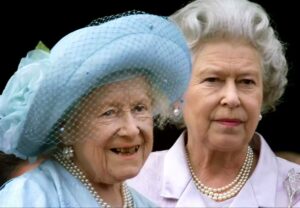 On 30 March 2002, The Queen Mother died in her sleep at the Royal Lodge, Windsor Great Park, with her surviving daughter, Queen Elizabeth II, at her bedside. She was 101 years old.
On 30 March 2002, The Queen Mother died in her sleep at the Royal Lodge, Windsor Great Park, with her surviving daughter, Queen Elizabeth II, at her bedside. She was 101 years old.
In 2002, despite the deaths of her sister and the Queen Mother, the Queen’s Golden Jubilee was marked with large-scale and popular events throughout London and the Commonwealth. The Queen spoke of 50 unforgettable years in which we had “witnessed the transformation of the international landscape through which the United Kingdom must chart its course”.
In 2003 military conflict once more erupted as British and U.S. forces invaded Iraq and toppled Saddam Hussein.
On 9 April 2005 Prince Charles married his second wife Camilla Parker-Bowles at Windsor Guildhall, Berkshire. The Queen did not attend the civil ceremony but joined with Prince Philip for the blessing afterwards.
In 2006, on the occasion of her 80th birthday, Prince Charles thanked the Queen for “the many wonderful qualities she has brought to almost an entire lifetime of service and dedication”. He heralded the monarch as “an example to so many of service, duty and devotion in a world of sometimes bewildering change and disorientation.”
In 2007 the Queen and Prince Philip celebrated 60 years of marriage and she became the oldest ever reigning British monarch. Tony Blair resigned as Prime Minister and Gordon Brown, his former Chancellor of the Exchequer, moved into Number 10 Downing Street.
In 2008 a worldwide banking crisis forced the Labour Government to bail out two major British banks. The following year Parliamentary integrity was severely damaged by an expenses scandal.
In 2010 David Cameron became Prime Minister of a Conservative and Liberal Democrat coalition government.
Royal wedding bells rang out once more in 2011 when Prince William married Catherine Middleton. They became Duke and Duchess of Cambridge.
On 6 February 2012, the Queen became only the second British Monarch to celebrate a Diamond Jubilee, marking 60 years since her accession to the throne. On 3 June a parade of 670 boats sailed from Wandsworth to Tower Bridge. An estimated one million spectators watched from the banks of the Thames while the pageant was broadcast around the world.
On the evening of Friday, 27 July 2012 the opening ceremony of the 2012 Summer Olympics was staged in London’s purpose-built Olympic Stadium. Prior to declaring the games open the Queen participated in a comedy sketch with 007 actor Daniel Craig as James Bond.
At 4.24pm on 22 July 2013 Prince George, the first child of The Duke and Duchess of Cambridge, was born at St Mary’s Hospital, London.
In the 2014 referendum on Scottish independence, voters rejected proposals put forward by the SNP to leave the United Kingdom.
At 8:34am on 2 May 2015 Princess Charlotte, the second child of the Duke and Duchess of Cambridge, was born at St Mary’s Hospital, London.
A historic milestone was passed on 10 September 2015 when Queen Elizabeth II became the longest ever reigning British monarch, surpassing the 63 years and 7 months reigned by her great-great-grandmother, Queen Victoria.
In a Referendum held on 23 June 2016 a majority of 52 per cent of the UK voted to leave the European Union. The severing of ties with Europe became known as Brexit. Following the unexpected result, Prime Minister David Cameron resigned and was replaced by Theresa May. The Queen also celebrated her 90th birthday.
Throughout 2017 the UK was embroiled in tough negotiations to regain national sovereignty from the European Union.
The year of 2018 saw the birth of Prince Louis, second son of the Duke and Duchess of Cambridge, along with the marriage of Prince Harry to former US actress Meghan Markle, who became the Duke and Duchess of Sussex.
In the General election of 2019 Conservative leader Boris Johnson became Prime Minister.
On 31 January 2020, under Prime Minister Boris Johnson’s majority government, the UK finally left the European Union.
In 2020 Prince Harry and his American wife exited royal duties and moved to begin a new life in the USA.
On 23 March 2020, the UK went into its first ‘national lockdown’ in response to the worldwide Covid pandemic.
On the morning of 9 April 2021, two months before what would have been his 100th birthday, Prince Philip, the longest-serving royal consort in world history, died in Windsor Castle.
In August 2021 the last UK flight carrying troops and diplomatic personnel left Kabul airport, bringing to an end Britain’s 20-year campaign in Afghanistan.
On 24 February 2022 Russia invaded Ukraine in what was widely considered an international act of aggression. The subsequent war triggered Europe’s largest refugee crisis since World War II, with more than 4.5 million Ukrainians fleeing the country and a quarter of the population displaced.
This is where we are today. Nobody knows what tomorrow will bring, or what it will take away.
But as we approach the forthcoming Platinum Jubilee celebrations marking the 70th anniversary of the accession of Queen Elizabeth II, thoughts will inevitably reflect on the remarkable journey we have travelled since 1952.
To mark the event – the first time that any British monarch has celebrated a platinum jubilee – there will be an extra bank holiday, and the usual Spring bank holiday will be moved from the end of May to the start of June to create a four-day Jubilee bank holiday weekend from Thursday 2 June to Sunday 5 June.
The ‘nation’s grandmother’ – universally admired for her unwavering devotion to duty and quiet pragmatism – has earned the respect of people not only of this country but around the world.
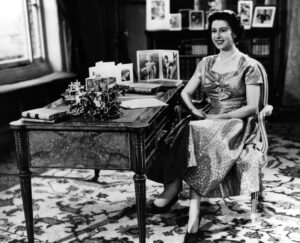 In her 1957 Christmas broadcast, the first to be televised, the Queen told her subjects:
In her 1957 Christmas broadcast, the first to be televised, the Queen told her subjects:
“I cannot lead you into battle, I do not give you laws or administer justice, but I can do something else. I can give you my heart and my devotion to these old islands and to all the peoples of our brotherhood of nations.”
To history, she will forever be known as Queen Elizabeth II. But as the end of the second Elizabethan age draws ever closer, this amazing woman continues to be held in hugely high esteem and affection – for a job well done.


